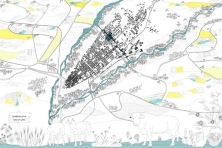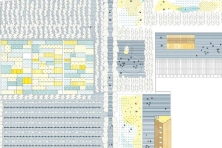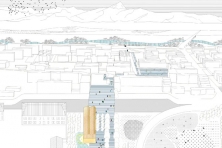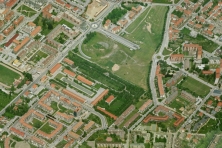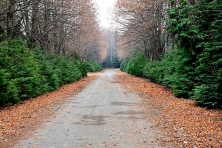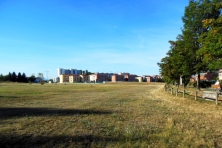Making Room(s)
Cuneo (IT) - Runner up
TEAM DATA
Team Representative: Cristina Renzoni (IT) – urbanist architect
Associates: Silvia Lanteri (IT), Vito Margaria Eudes (IT) – architects; Ianira Vassallo (US) - urbanist architect
Contributor: Giorgia Greco (IT) - urbanist architect
makingrooms.europan@gmail.com – makingrooms.com
See the complete listing of portraits here
See the site page here

V. Margaria Eudes, I. Vassalo, C. Renzoni & S. Lanteri
INTERVIEW
Click on the images to enlarge
1. How did you form the team for the competition?
During the past few years we have shared a number of research and teaching activities at the universities Politecnico di Torino and Politecnico di Milano, consolidating a common expertise on topics related to the urban legacy of spaces, uses and place-making processes in contemporary cities.
2. How do you define the main issue of your project, and how did you answer on this session main topic: the place of productive activities within the city?
The project Making Room(s) aims to propose an original perspective on the theme of productive city, starting both from a wide and a narrow point of observation on the city of Cuneo. The first one highlights the strict connection with a wider environmental context: the Alpine region and the agricultural landscape contribute to the creation of renowned products of excellence in the food and wine sector, playing a relevant role in defining the very identity of this place.The second point of observation looks at the scale of the city and neighbourhoods, and highlights their remarkable social capital, constituted by a rich network of civic and economic associations, both medium and small-sized, that ensure a vibrant urban life.
3. How did this issue and the questions raised by the site mutation meet?
The project Making Room(s) is characterized by two main ideas. The first one is to work not only on a new centrality (the former barracks of Caserma Montezemolo), but to propose a new slow axis of public spaces for this part of the city of Cuneo, aiming at sewing up the city East-West from river to river, and connecting a multiplicity of meaningful and potential places. The second one is the idea to mix the issue of productive city with the idea to build a common good. For this reason our project was figured out as the result of a process of participation: the idea is to involve people in urban transformation and also to design a sustainable project not only in a political and economic point of view but also in terms of uses and activities. A place that could create opportunities for new job, answers to citizens needs and spaces for new activities.
4. Have you treated this issue previously? What were the reference projects that inspired yours?
This project is a mix of different inspirations and interests. In our group there are two urbanists and two architects: it means that we share different tools, scales, and approaches to the city in order to investigate innovative strategies for urban regeneration processes. We have been working on the elaboration of future scenarios of transformations in different urban contexts in Europe and Asia, dealing with re-industrialization processes, collective demands for public spaces and participation.
5. Urban-architectural projects like the ones in Europan can only be implemented together with the actors through a negotiated process and in time. How did you consider this issue in your project?
Our project choose to deal explicitly with participation, temporality of the process, involvement of active citizenship. Making Room(s) starts from here: a potential involvement of local communities; a project of liveable spaces; a possible program of uses. Together. Step by step. Room by room. There are at least three reasons making this project essential and innovative: 1) to make more visible the relation between the city and its own territory; 2) to allow the creation of new spaces of centrality beyond the traditional ones; 3) to experience a new way of planning the city, more conscious and inclusive. This view promotes the involvement of local communities and associations in order to structure an innovative idea of public space.
6. Is it the first time you have been awarded a prize at Europan? How could this help you in your professional career?
It was the first time we received a prize at Europan. About the professional career, we are a variegated group of people in terms of age, skills, ambitions… so this competition could represent a different experience for each and everyone of us, but in particular it could be an important opportunity for this group to explore our project identity and to try to investigate an innovative approach for the Italian urban transformation that focuses on the involvement of local communities.
